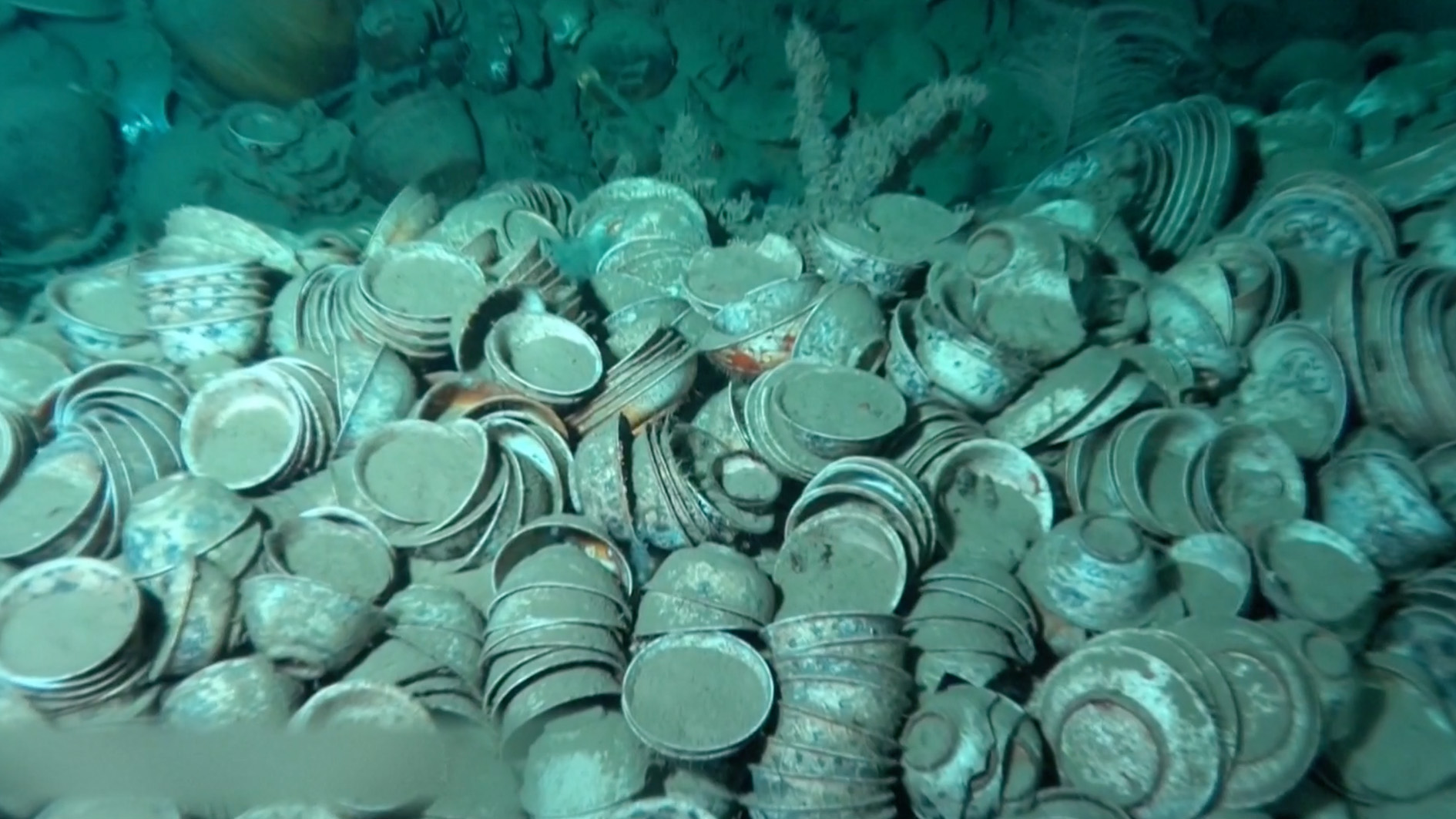Editor's note: This is the fourth article of a series covering the discovery of two Ming Dynasty shipwrecks in the South China Sea. CGTN will write more about the topic according to the archaeological research progress. You can find the previous pieces here.
The ground-breaking investigation into two centuries-old shipwrecks in the South China Sea was successful on Sunday, as a joint archaeological team secured more than 200 well-preserved cultural relics from the site 1,500 meters beneath the waters.
Among the discoveries were an iron anchor measuring about one meter in length, a box that appears on first inspection to be made of wood, two pieces of timber, and various ceramic items, such as a blue-and-white porcelain jar, a blue-and-white porcelain dish and a white-glazed bowl.
The relics will contribute to the research on China's maritime history, ceramic history, overseas trade history and study on the Maritime Silk Road.
Archaeologists estimated that total amount of the relics could exceed 100,000 pieces, most of which are porcelain made during the Ming Dynasty (1368-1644) in Jingdezhen – the capital of porcelain – for daily use and decoration.
China planned to carry out the second and third investigations in August 2023 and March 2024.
Professor Qin Dashu of Peking University told China Media Group (CMG) that he was "totally shocked" when he saw the relics.
"You can even see each of the cabins, with the goods in their own place," he said.
Unprecedented mission
The discovery is not only a breakthrough for China's deep-sea archaeology, but also a significant archaeological discovery on a global level.
China started its underwater archaeological explorations in the 1980s, but most of the missions were conducted in shallow coastal areas, about 40 meters below sea level. In 2018 and 2022, the country conducted two deep-sea archaeological investigations, opening a new chapter for the country's deep-sea archaeology.
However, this most recent mission is particularly challenging.
For one thing, the extensive nature of the archaeological findings at the site poses certain challenges. Apart from the shipwreck, large amounts of ceramics and pottery objects, as well as pieces of timber, were found scattered across an area of about 10,000 square meters, sitting on the ocean floor about 1,500 meters below sea level.
01:13

Moreover, there is no one to turn to for guidance on such a project. "There is no previous case worldwide of conducting an archaeological investigation on shipwrecks of such scale at this depth," said Chen Chuanxu, an expert in geophysical prospecting and deputy head of the mission.
The team members had to grope their way and blaze their own path.
"Unexpected situations could arise at any moment," said Song Jianzhong, head of the mission. "It is a tough trip for everyone, and great challenges await us."
Each dive took around eight to nine hours, during which the archaeologists worked with great concentration to observe, record and analyze the site's status. Meanwhile, the submersible pilots, in accordance with the experts' instructions, performed tasks like laser measurement and multi-angle footage recording, and collected samples and relics with the submersible's robotic hand.
"In many cases, there is no second chance – one mistake can lead to irreversible consequences," said submersible pilot Li Hangzhou, adding that all the submersible pilots maintained the highest standards during the mission.
(With inputs from Xinhua.)